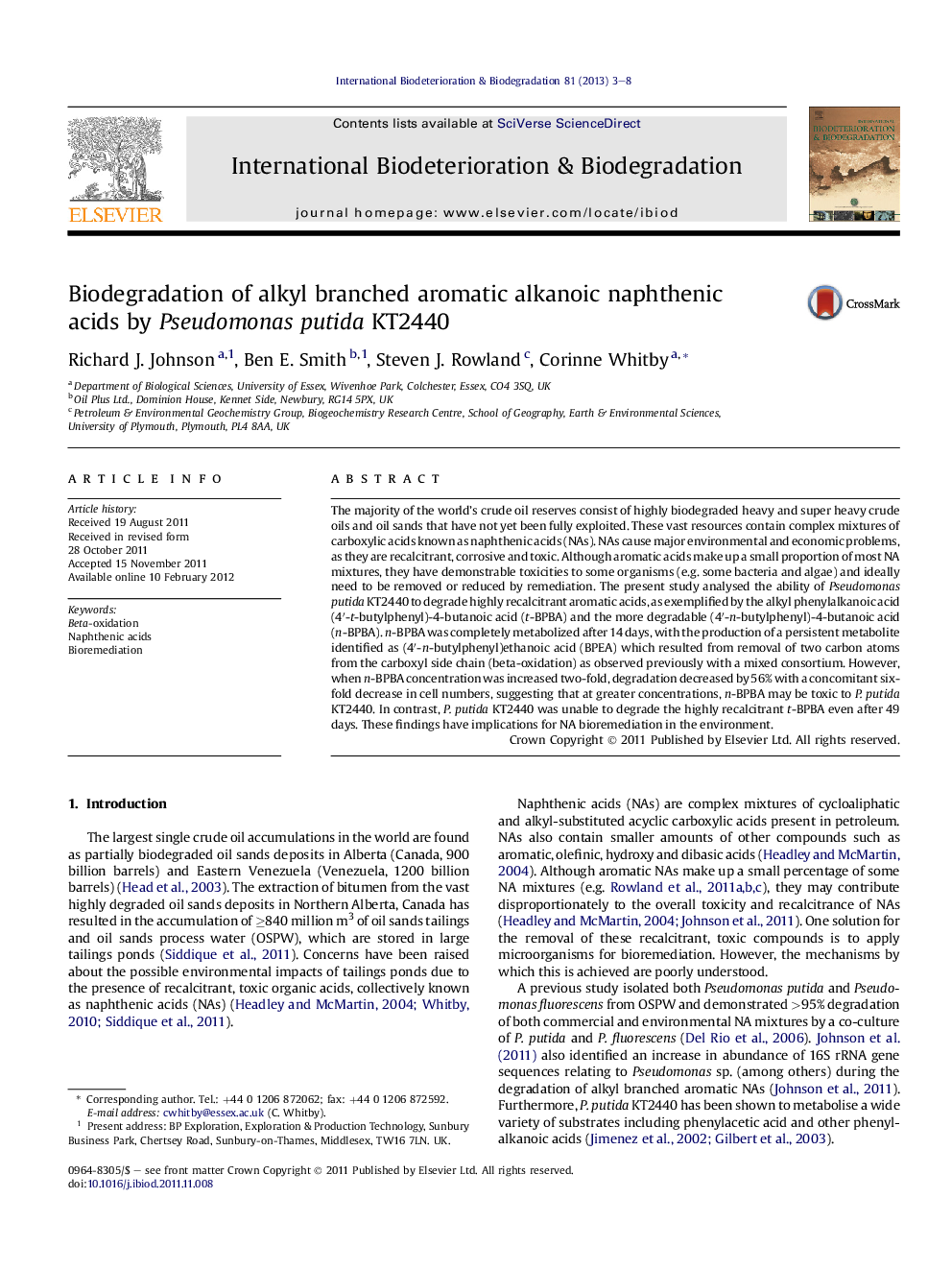| کد مقاله | کد نشریه | سال انتشار | مقاله انگلیسی | نسخه تمام متن |
|---|---|---|---|---|
| 4364938 | 1616334 | 2013 | 6 صفحه PDF | دانلود رایگان |

The majority of the world’s crude oil reserves consist of highly biodegraded heavy and super heavy crude oils and oil sands that have not yet been fully exploited. These vast resources contain complex mixtures of carboxylic acids known as naphthenic acids (NAs). NAs cause major environmental and economic problems, as they are recalcitrant, corrosive and toxic. Although aromatic acids make up a small proportion of most NA mixtures, they have demonstrable toxicities to some organisms (e.g. some bacteria and algae) and ideally need to be removed or reduced by remediation. The present study analysed the ability of Pseudomonas putida KT2440 to degrade highly recalcitrant aromatic acids, as exemplified by the alkyl phenylalkanoic acid (4′-t-butylphenyl)-4-butanoic acid (t-BPBA) and the more degradable (4′-n-butylphenyl)-4-butanoic acid (n-BPBA). n-BPBA was completely metabolized after 14 days, with the production of a persistent metabolite identified as (4′-n-butylphenyl)ethanoic acid (BPEA) which resulted from removal of two carbon atoms from the carboxyl side chain (beta-oxidation) as observed previously with a mixed consortium. However, when n-BPBA concentration was increased two-fold, degradation decreased by 56% with a concomitant six-fold decrease in cell numbers, suggesting that at greater concentrations, n-BPBA may be toxic to P. putida KT2440. In contrast, P. putida KT2440 was unable to degrade the highly recalcitrant t-BPBA even after 49 days. These findings have implications for NA bioremediation in the environment.
► P. putida KT2440 degraded n-BPBA to a persistent metabolite n-BPEA by day 14.
► The highly branched t-BPBA was not degraded by day 49.
► Biodegradation of n-BPBA was via beta-oxidation of the alkanoic acid side chain.
► Increased n-BPBA concentration was toxic as degradation and cell number decreased.
► These findings have important implications for bioremediation of such acids.
Journal: International Biodeterioration & Biodegradation - Volume 81, July 2013, Pages 3–8